In a world where chaos reigns supreme, digital planning tools swoop in like superheroes ready to save the day. Gone are the days of scribbled notes and chaotic calendars. With a few clicks, anyone can transform their jumbled thoughts into organized, actionable plans. Whether it’s managing a project, scheduling a meeting, or simply remembering to pick up groceries, these tools are the trusty sidekicks everyone needs.
Table of Contents
ToggleOverview of Digital Planning Tools
Digital planning tools significantly enhance organization and productivity. Various applications cater to specific needs, from project management platforms to simple to-do lists. These tools enable users to customize workflows, streamline tasks, and boost efficiency.
Project management tools like Asana and Trello facilitate team collaboration. Users assign tasks, set deadlines, and track progress visually, creating accountability within teams. Integration of features such as calendar synchronization and file sharing elevates team communication.
For personal use, apps like Todoist and Microsoft To Do focus on individual task management. Users easily list daily chores and manage schedules. Notifications and reminders help individuals stay on track with their commitments.
Note-taking applications such as Evernote and Notion support idea organization. Users capture thoughts, links, and files in one place, enhancing creativity and knowledge retention. Robust search functionalities enable quick access to saved information.
Budgeting tools like Mint and YNAB cater to financial planning. Users track expenses and savings goals while visual graphs provide insights into spending habits. Clear visuals help individuals make informed financial decisions.
Digital calendars such as Google Calendar simplify scheduling. Users create events, set reminders, and share calendars with others. Accessibility across devices makes it easy to stay updated on appointments.
Collaboration and flexibility define digital planning tools. Adopting these tools empowers users to manage their time and responsibilities effectively. Embracing technology fosters efficient planning in both personal and professional contexts.
Benefits of Using Digital Planning Tools

Digital planning tools significantly boost organization and productivity through unique features tailored to user needs. These tools streamline tasks and enhance overall effectiveness.
Increased Efficiency
Digital planning tools simplify task management. They allow users to create organized lists that prioritize assignments. For instance, apps like Todoist enable quick updates and adjustments, making it easier to adapt to changing schedules. Task deadlines stay visible, ensuring users remain focused. With reminders and notifications, tasks don’t fall through the cracks. Visual progress tracking in tools such as Asana keeps teams aligned. By consolidating multiple functions into a single platform, users save time and resources. Efficiency becomes more attainable when everyone stays informed about their responsibilities.
Enhanced Collaboration
Collaboration improves significantly with digital planning tools. Teams can communicate seamlessly within platforms like Trello and Microsoft Teams. Members assign tasks, share files, and provide instant feedback without tedious email chains. Centralized information fosters a collaborative environment where everyone accesses the same resources. Real-time updates ensure that all team members stay on track. This transparency leads to fewer misunderstandings and higher productivity levels. By enhancing visibility into projects, these tools strengthen teamwork and accountability. Users feel more connected and engaged, which ultimately drives better project outcomes.
Types of Digital Planning Tools
Digital planning tools come in various forms, each designed to enhance organization and efficiency. These tools streamline processes, enabling users to manage tasks and schedules more effectively.
Project Management Software
Project management software enables teams to collaborate efficiently. Applications like Asana and Trello facilitate task assignments, track deadlines, and visualize progress on projects. Team members coordinate efforts while ensuring everyone stays informed. Features such as file sharing and comment sections enhance communication within teams. Analytics within these platforms help project managers assess performance and make adjustments as needed. Choosing the right tool depends on team size and specific project needs.
Calendar and Scheduling Apps
Calendar and scheduling apps simplify management of appointments and deadlines. Google Calendar and Apple Calendar enable users to set reminders and share events with others. Color-coded systems help users prioritize tasks visually. Syncing capabilities across devices ensure that schedules remain updated, enhancing accessibility. Users can also integrate these apps with project management tools for a cohesive experience. Notifications serve as gentle reminders of upcoming commitments, helping maintain organization throughout the day.
Features to Look for in Digital Planning Tools
Selecting the right digital planning tools hinges on understanding key features that enhance functionality. Choosing tools with certain characteristics streamlines the planning process and boosts productivity.
User-Friendly Interface
A user-friendly interface streamlines navigation and minimizes the learning curve. Intuitive designs enable users to find features quickly, allowing for a smooth experience. Clear labels and organized layouts facilitate efficient task management. Customization options help personalize the experience, aligning the tool with user preferences. Simplicity often leads to increased engagement, ensuring users interact frequently with the tool.
Integration Capabilities
Integration capabilities connect various tools, enhancing overall workflow. Compatibility with other applications, such as email or calendars, streamlines processes and decreases time spent switching between platforms. Users benefit from seamless synchronization, ensuring data consistency across the board. Robust API support allows for custom integrations, catering to unique needs. This flexibility fosters a more cohesive digital ecosystem, enhancing user satisfaction and productivity.
Digital planning tools have revolutionized the way individuals and teams approach organization and productivity. By providing tailored solutions for task management scheduling and collaboration they empower users to streamline their workflows and enhance efficiency. With a variety of options available from project management platforms to budgeting apps there’s a tool suited for every need.
These tools not only simplify daily tasks but also foster a collaborative environment that drives better outcomes. As technology continues to evolve embracing these digital solutions will be essential for anyone looking to stay organized and productive in today’s fast-paced world. Adopting the right digital planning tools can lead to significant improvements in both personal and professional life making it easier to achieve goals and manage responsibilities effectively.


